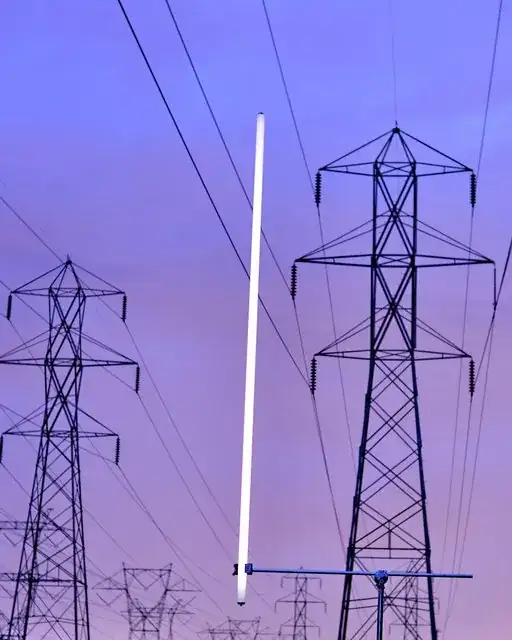It is certainly possible to "harvest" power via induction from high voltage power lines. There is a vertical voltage drop from the wires to the ground. This effect can power stuff.
For an example of this, see this (awesome) picture of a neon being lit by proximity to the power lines.
 source
source
Also, this energy leakage is openly admitted by power lines companies, for example:
Electric fields emanate from any conductor or wire that carries voltage. Higher line voltages produce higher electric field strengths. The closer the conductor is to the ground, the higher the field strength beneath it tends to be, and the
increased possibility of shocks.
Larger objects such as a building or a large vehicle have the capability of a larger charge and therefore the shock could be more noticeable. Backyard metallic objects such as swings, portable grills and lawnmowers have been known to deliver similar shocks. Ungrounded metal wire fences can also receive sufficient charges to cause nuisance shocks.
—source
Lighting a neon bulb is one thing, but how much power can be generated? This was studied multiple times, for example in 1976 by the US Department of Agriculture. One of the major risks (or opportunities to "generate" power) is when building fences parallel to high-voltage power lines.
For typical fence values, h = 4 feet (1.22 meters), GMR = 0.125
inches (3.2 × 10-3 meters) and a ground voltage gradient of 4 kV/M
(maximum gradient for a lateral distance of 38 feet from the center
line of the 345 kV transmission line, Figure 111-1, and a phase
conductor vertical clearance of 29 feet, reference 12) then from
Equation 111-3 the magnitude of electric shock current is:
|Ishock| = 15.4 × 10-6 amperes/meter or 25 milliamperes/mile
—source
This is a theoretical calculation so take it with a grain of salt. These are relatively small currents, and correspond to a 15 milliWatts (≈1.5 × 10-5A × 10 ×3V) for every meter of ungrounded fence. Now, a house consumes about 100,000 times more power (kiloWatts).
Is it possible? Yes, there is clearly a voltage gradient at which point how much energy can be harvested is a matter of size of the antenna we use.
Is it feasible? No, because the size is likely to be a few kilometers of ungrounded wire, which is not exactly a cheap solution. It is in fact, potentially deadly, as anyone touching it would get a major shock, certainly illegal and very hard to hide.
I will post more papers if I find them - most are IEEE papers behind a paywall :-(
